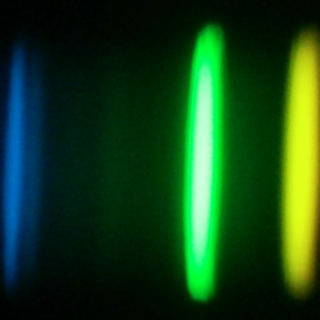Bibcode
Schultheis, M.; Rojas-Arriagada, A.; García Pérez, A. E.; Jönsson, H.; Hayden, M.; Nandakumar, G.; Cunha, K.; Allende Prieto, C.; Holtzman, J. A.; Beers, T. C.; Bizyaev, D.; Brinkmann, J.; Carrera, R.; Cohen, R. E.; Geisler, D.; Hearty, F. R.; Fernandez-Tricado, J. G.; Maraston, C.; Minnitti, D.; Nitschelm, C.; Roman-Lopes, A.; Schneider, D. P.; Tang, B.; Villanova, S.; Zasowski, G.; Majewski, S. R.
Referencia bibliográfica
Astronomy and Astrophysics, Volume 600, id.A14, 14 pp.
Fecha de publicación:
3
2017
Revista
Número de citas
73
Número de citas referidas
68
Descripción
Context. Baade's window (BW) is one of the most observed Galactic bulge
fields in terms of chemical abundances. Owing to its low and homogeneous
interstellar absorption it is considered the perfect calibration field
for Galactic bulge studies. Aims: In the era of large
spectroscopic surveys, calibration fields such as BW are necessary for
cross calibrating the stellar parameters and individual abundances of
the APOGEE survey. Methods: We use the APOGEE BW stars to derive
the metallicity distribution function (MDF) and individual abundances
for α- and iron-peak elements of the APOGEE ASPCAP pipeline
(DR13), as well as the age distribution for stars in BW. Results:
We determine the MDF of APOGEE stars in BW and find a remarkable
agreement with that of the Gaia-ESO survey (GES). Both exhibit a clear
bimodal distribution. We also find that the Mg-metallicity planes of the
two surveys agree well, except for the metal-rich part ([Fe/H] >
0.1), where APOGEE finds systematically higher Mg abundances with
respect to the GES. The ages based on the [C/N] ratio reveal a bimodal
age distribution, with a major old population at 10 Gyr, with a
decreasing tail towards younger stars. A comparison of stellar
parameters determined by APOGEE and those determined by other sources
reveals detectable systematic offsets, in particular for spectroscopic
surface gravity estimates. In general, we find a good agreement between
individual abundances of O, Na, Mg, Al, Si, K, Ca, Cr, Mn, Co, and Ni
from APOGEE with that of literature values. Conclusions: We have
shown that in general APOGEE data show a good agreement in terms of MDF
and individual chemical abundances with respect to literature works.
Using the [C/N] ratio we found a significant fraction of young stars in
BW.
Proyectos relacionados

Evolución Galáctica en el Grupo Local
La formación y evolución de galaxias es un problema fundamental en Astrofísica. Su estudio requiere “viajar atrás en el tiempo”, para lo cual hay dos enfoques complementarios. El mas extendido consiste en analizar las propiedades de las galaxias a diferentes distancias cosmológicas. Nuestro equipo se concentra en el otro enfoque, denominado
Emma
Fernández Alvar

Huellas de la Formación de las Galaxias: Poblaciones estelares, Dinámica y Morfología
Bienvenida a la página web del g rupo de investigación Traces of Galaxy Formation. Somos un grupo de investigación amplio, diverso y muy activo cuyo objetivo principal es entender la formación de galaxias en el Universo de una manera lo más completa posible. Con el estudio detellado de las poblaciones estelares como bandera, estamos constantemente
Anna
Ferré Mateu

Abundancias Químicas en Estrellas
La espectroscopía de estrellas nos permite determinar las propiedades y composiciones químicas de las mismas. A partir de esta información para estrellas de diferente edad en la Vía Láctea es posible reconstruir la evolución química de la Galaxia, así como el origen de los elementos más pesados que el boro, forjados principalmente en los interiores
Carlos
Allende Prieto